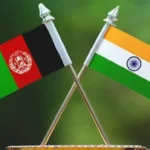In a decree on women’s rights released by the Taliban in December last year, it was declared, “A woman is not a property, but a noble and free human being; no one can give her to anyone in exchange for peace…or to end animosity”. While the decree stated with clarity the position of the de facto government on women’s right to consent to marriage and property, their rights to education and work were conspicuously missing. From the onset of United States negotiations with the Taliban in a bid to withdraw in peace from Afghanistan, there was a growing belief among certain American circles that they were engaging with an evolved group, and direct interaction will perhaps provoke an exposure to democratic practices, a change in their ideology, and a departure from a militaristic approach to one of effective governance. However, with subsequent decisions since the takeover undermining girls’ education, skepticism is once again dominating the discourse, with yesteryear’s repertoire of the group in particular focus.
Female Education: Taliban, Then and Now
The first Taliban rule in Afghanistan which lasted from 1996 to 2001, gained most of its notoriety for its policies concerning women, including the right to education.
Several years have elapsed since and numerous accounts have emerged over time, so much so that it is difficult to ascertain now whether a particular narrative is fictitious or a genuine depiction of the lived reality of Afghan women in those years.
According to Amnesty International, women were then reduced to near invisibility from public life, with restrictions on their receiving education, seeking employment, their general dress code, leaving the house without a male escort, access to healthcare delivered by male staff, and political or public participation.
Ironically, the premise on which such discrimination was normalized in the past was Sharia, the Islamic Law. Albeit Islam is credited as a universal religion for all times, places, and peoples, in particular for emancipating women by granting them their due rights within proscribed limits, encompassing all areas of their public and private life, the Taliban were denounced for harsh interpretations of it. The effect of policies predicated on such a hard-liner approach on the global perception of the Taliban, especially accounts of brutal punishments, contributed much to their dehumanization in mainstream media.
Taliban 2.0. and Closure of Girls’ Schools
Yet, there was a heightening sense, if not a unanimous agreement among observers, that the Taliban as an organization too had undergone significant transformations in the years of war, and a visible moderation in their views and policies could be anticipated in their inevitable assumption of authority. After the takeover, the new regime, dubbed by the media as ‘Taliban 2.0.’, announced that the country will be governed by Islamic Law, not the principles of democracy. Moreover, women were assured that their liberties under Islamic provisions would be respected, including education and employment. Despite various statements asserting their commitment to upholding the rights of women, and the Ministry of Education’s promise to re-open schools on March 23rd, a closure of girls’ high schools was announced within hours of them arriving at campuses. The sudden decision has since then been met with a mixture of reactions ranging from shock, confusion, disappointment, and anger. Perhaps, the lack of transparency and clarity on part of the de facto government as to the rationale has contributed to the perplexity of the atmosphere. For one, contradictions are apparent in both statements and actions. Initially, the notification issued declared that a plan would be drawn up per “Islamic law and Afghan culture” before schools could be reopened. In another statement, the ministry also acknowledged the “shortage of teachers” as an obstacle to the resumption of normal school activities.
If there had been any lingering hope in the government’s intention to reopen girls’ schools sooner or later, they were dashed when four schools in Gardez, the provincial capital of Paktia, were closed under official orders after reopening briefly, causing dozens of female students to take to the streets to register a protest. Lending credence to speculations of lack of consensus on the subject within Taliban leadership, Acting Education Minister Noorullah Munir while visiting Uruzgan province in a statement deflected blame on Afghan culture for the closure, arguing that it was more of a question of willingness on part of Afghan parents to send their girls to school.
It remains unclear whether the Taliban regime is cognizant of the potential of such ambiguity to be a watershed moment in their reliability as rulers, with contradictory attitudes shifting the loyalties of the larger public.
The Taliban have currently an enormous challenge at hand, that of pacifying growing concerns about their viability. It reflects poorly on the new regime to renege on its promises, especially when it has propped itself on a premise of higher moral ground than those of its political opponents and critics. Ultimately, religiosity is multifaceted, with even Sharia not confined to one rigid interpretation, and the Taliban will have to comprehensively analyze if their provided rationales have underlying questionable biases peddled under the garb of sacrosanct commandments.
Your go-to editorial hub for policy perspectives and informed analysis on pressing regional and global issues.





Add a Comment